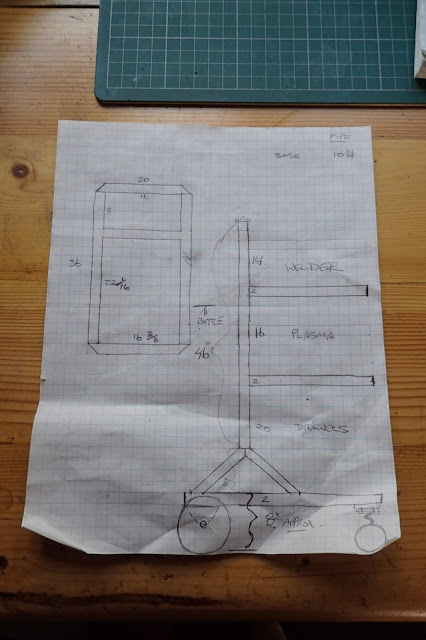Trophy Bike Shelf
The Trophy Bike Shelf
Being under 'house arrest', the damned virus scourge, and way too much time on my hands... here's something a little different.
My days of competitive riding are over, my trusty steed kept on getting kicked around the basement. That's no way to treat your 'best ride'. Before the Merlin got damaged, better to hang it up and admire the ride.
Doing some research, I found an enterprising entrepreneur who designs, builds, and markets a great looking bike shelf. It's nice enough looking to mount on the wall (in my case, the rec room). Now I can sit back, enjoy the sweet lines of the 'TI' machine and remember all the excellent long rides over the years.
I don't plan to hijack their idea and market their design. But did enjoy building my own.
http://www.theknifeandsaw.com/KSItemDetail.php?PC=2&II=2
http://www.theknifeandsaw.com/PDFs/FittingGuide_TheBikeShelf.pdf
My trophy bike shelf is made out of sangele wood. I got it from my local hardwood yard. My only regret using this kind of wood is that it originates from Africa, and I'm not sure whether sangele is considered 'endangered' and/or 'threatened'. I usually build stuff out of maple, cherry, oak, walnut and the like. In the future, I'll go to the local species type wood.
The finished bike shelf dimensions are: 15" wide, 15" deep, 6" high. it's important that you've enough depth to make the bar and the pedals clear the wall. You also want to make it the right width so that holder cradles the top tube perfectly. The opening needs to be wide enough to accept the top tube diameter. I also made the shelf wide so as to sit between the cable guides on my top tube of my 'old school' titanium frame. All the necessary measurements can be gleaned from the website link.
The sangele wood stock came in 4/4 size. I planed it down to 3/4" thickness. The board was about 8" wide and 8' long. It wasn't cheap.
The top and bottom consists of three, 5" wide doweled, laminated boards. The side are one piece, 6" wide pieces.
I used box joint joinery. I've done it so many times, I'm pretty confident in producing tight, smooth joints. It worked pretty well. Sangele wood is a little difficult to cut box joints. Even with a backing board it has a tendency to tear when using a dado blade. Cutting 3/4" notches was a long, slow process, making sure you don't 'push' it hard and fast. Couple of spots got a little rough, but overall it finished pretty well. There are no nails or screws fastening the box, just box joints and glue.
Finishing included:
Sanding, a lot of sanding, 80, 120, 180, and 220 grits.
Three coats of boiled linseed oil, letting each coat dry completely, process took a week.
Three coats of finishing wax.
I attached the bike shelf on to a stained, urethane wall board. In my case, where I was mounting the shelf, I didn't span two studs. So the oak all board is solid and wide enough to span two wall studs. I gotta say, the finished bike shelf isn't light, but this setup is solid.
I cleaned her up really nice, put on my best wheels, oiled up the drive-train, and splashed on some bike lust.
Anyways, make a great shrine for the trusty steed. Time to enjoy the great memories. Take it easy.














What a great job on a great project...Lot's of fun memories drafting behind the Merlin
ReplyDeleteAwesome project. What year did you compete in the Ironman? Was it IM Canada?
ReplyDeleteThanks. Yes, lronman Canada, Penticton, BC, ‘98.
Delete